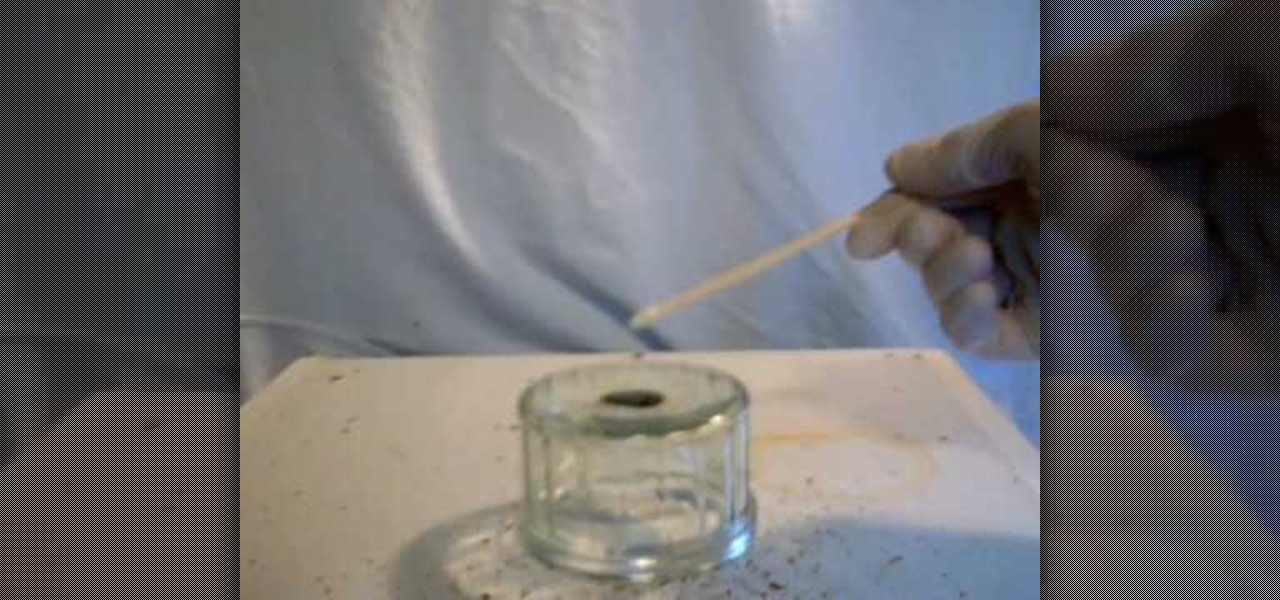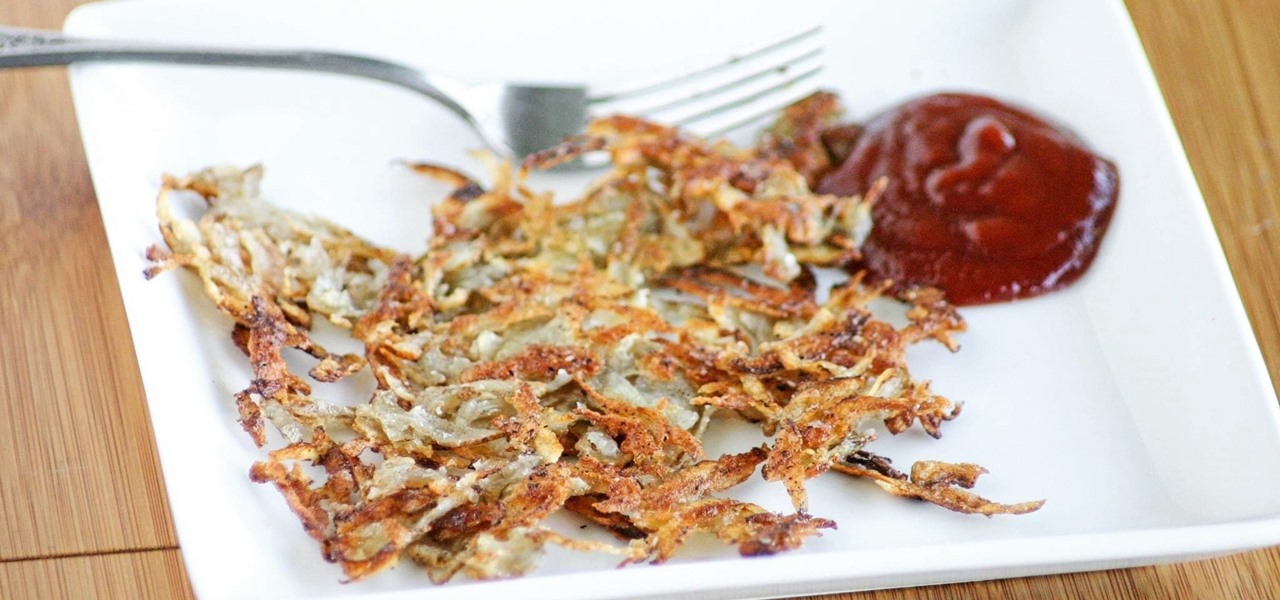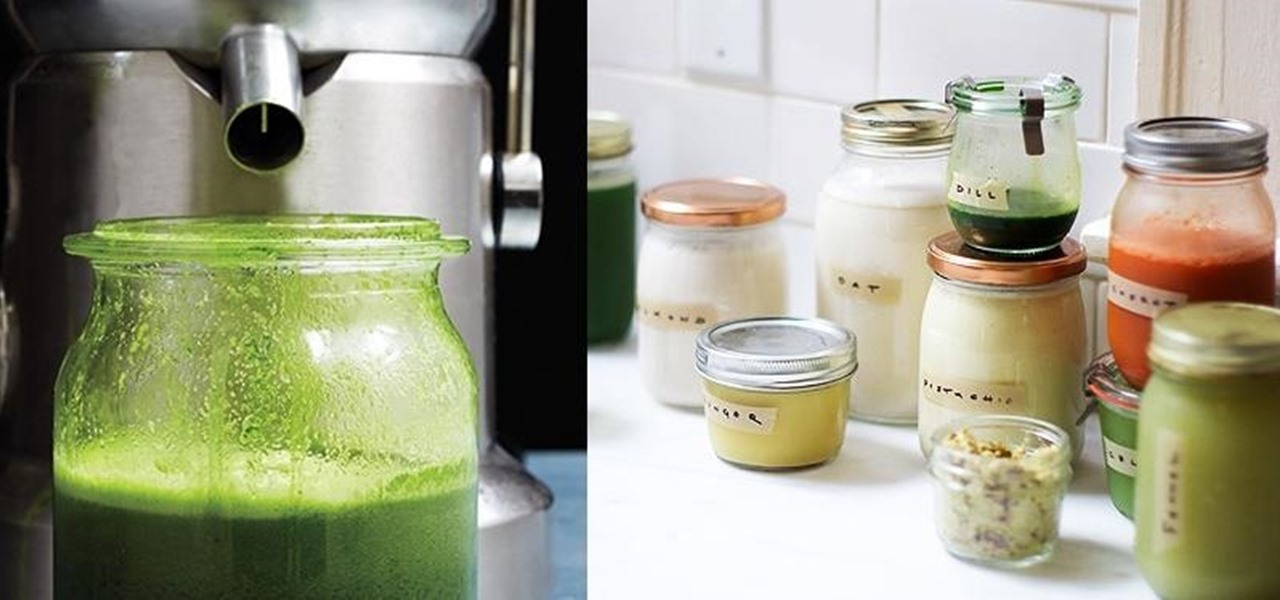
C For Chemistry delves into the chemistry of science experiments. This chemist knows what he's talking about. These chemistry experiments are not only fun, but very educational for all of those interested in scientific chemical reactions and properties.

Join Lisa Niven Kelly from beaducation and learn all the basics on getting started with stamping. Learn how to personalize your jewelry by stamping on metal. In this demo, Lisa discusses the necessary tools and teaches you how to make a pendant by stamping on a metal blank, punching a hole, and oxidizing. So get out your letter stamps, bench block, and hammer and stamp away! Learn how to make a stamped pendant for jewelry making.

Watch this chemistry demo of the oxidation of iron and learn how to perform this experiment yourself.

To prevent sliced fruits like apples and pears from oxidizing and turning brown before serving, start by juicing one lemon.

In this video we learn how to understand chemical change in Chemistry. When you start out, you must first figure out what your cathode and anode is in the equation. Then, read it out to find out if it's oxidized. Once you have this figured out, you can find the conditions of temperature you need to maintain the chemicals. You can figure this out b doing a basic equation for all of the chemicals. Fill this in with the correct information, then the answer will be done. Make sure you understand ...

This is how to solder wires properly and then heat shrink them in order to insulate them. Firstly upkeep of the soldering iron is required to keep it from oxidizing. Portable versions of the iron are also available to make work more convenient. A solder sucker is required to suck up and solder left behind by the iron. Alternatively you could use a solder wick which when used with the solder iron can absorb all the solder over the circuit board. Onto the actual process, strip off some of the w...

Pyromania is definitely nothing new on WonderHowTo. From flamethrowers and hydrogen fireballs, to flame-making pistons and wine corks, to simply burning steel wool fireworks and DIY smoke mix, we've covered it all. But when pyromaniacal mad scientists feel the need to release some tension in the lab, gummy bears and cockroaches become the victims of euphoric oxidation by way of molten potassium chlorate. A recent video by famous YouTube chemist NurdRage shows one of mankind's most despised cr...

This video tutorial is in the Education category which will show you how to make manganese heptoxide (permanganic acid). This procedure is extremely dangerous. Manganese heptoxide is an extremely powerful oxidizing agent. It has the ability to set fuels on fire from mere contact. Get an old dish and put a spatula full of potassium permanganate on it. Add a few drops of concentrated sulphuric acid. A green liquid is formed which is the manganese heptoxide. Now you can add any fuel like butanol...

In this video, I will show you how to make copper glow red hot with the catalytic oxidation of acetone. For this science experiment, we'll just need some acetone, copper wire, and a flame source to initially heat the copper coil we'll make.

In this video, I will show you how to perform the color-changing, blue bottle experiment with common household products.

Once you've reached an age where sparklers are no longer fun, it's time to upgrade to science and steel wool. It may be basic chemistry, but as you'll see in the video, simplicity can amaze more than complexity, as well as create some really impressive fireworks that are perfect for the Fourth of July.

Various electrochemical reactions requires that anodes do not degrade when used. Carbon is cheap, but degrades easily and platinum is extremely expensive. In a previous video, you learned "How to make cobalt and manganese nitrates", and you saw that titanium could be used as a cathode, but not as an anode due to an effect called passivation.

You already know how to make sulfuric acid with the metabisulfite and oxidizer method and you saw how to make copper sulfate from copper and sulfuric acid, so now try making sulfuric acid with these two in mind… with sulfuric acid by electrolysis of copper using an inert anode.

Aluminum nitrate nonahydrate is a crystalline hydrate - a salt of aluminum and nitric acid - Al(NO3)3·9H2O. It's used for a variety of things such as antiperspirants, corrosion inhibitors, and petroleum refining, or… glow-in-the-dark powder. Watch this science video tutorial from Nurd Rage on how to make aluminum nitrate nonahydrate with Dr. Lithium.

Watch this science video tutorial from Nurd Rage on how to make silver different colors by electrochemical anodizing. Without using paint, you can give a silver surface various colors by anodizing it.

Ian Knauer, a food editor at Gourmet and Test Kitchen demonstrate how to trim artichokes. First, remove the inedible leaves towards the base of the artichoke by peeling them off or snapping them off. Once the leaves are peeled off you'll see pale green and yellow leaves. Next, trim up the stem by taking a paring knife and cutting off the bottom. Peel off the stem around the fibrous core. Then, cut off the green pieces by the base of the artichoke. Curve your knife when you make the cut to sav...

Watch this science video tutorial from Nurd Rage on how to make potassium permanganate with Dr. Lithium with potassium nitrate and manganese dioxide.

This video demonstration shows several ways to make glass ribbon cane for use in other projects. Bullseye brand COE-90 glass and a propane rich flame are used, as a slightly oxidizing flame is less likely to damage colors. Watch this video glass-working tutorial and learn how to work with both cane and stringer glass to make multi-colored glass projects.

Most of you probably spread ketchup all over hamburgers and fries. Some of you may even drink it straight. But did you know that tame (and slightly addictive) condiment in your fridge is also a powerful cleaning agent?

In the perpetual search for a renewable and convenient energy source, our bacterial friends have once again stolen the limelight.

I feel like doing a bit of chemistry today, how about you? To my knowledge, thermite is the hottest burning man-made substance. Thermite is a pyrotechnic composition of a metal powder and a metal oxide that produces an exothermic oxidation-reduction reaction known as a thermitereaction.

Hash browns are a breakfast staple and for good reason: they're simple, salty, and crispy, and so delicious that you can easily down several servings of them in one sitting. Basically, they're the French fries of breakfast.

Personally, I think everyone should have the freedom to sit down and enjoy a delicious breakfast each morning... but that isn't always attainable, especially because of the prep work and cook time that tasty meals often require.

Everyone starts their mornings differently, but one common thread amongst the masses tends to be the consumption of coffee, albeit in many different forms—instant, pre-ground, K-Cups, Nespresso, and so on. And I'm sure that we all have our own preferred methods, as well.

Few things are as frustrating as grabbing food from the fridge just to discover that your leftovers have gone bad. When it comes to cheese, you may have taken every last precaution to keep it as fresh as possible—sealed plastic containers, saran wrap, parchment paper—but to no avail.

Onions add essential flavor to almost any dish, whether it's a sauce, main dish, or salad. They are one of the humblest "superfoods," full of vitamins and nutrients but generally inexpensive, which is why they're also one of the most widely eaten ingredients in the world.

Flowers may be beautiful, but they're not usually appetizing. Sure, nasturtiums are hip in fancy restaurants, but they're primarily used as a garnish. Granted, fried squash blossoms are incredible, but the point remains: flowers are usually reserved for looking at, not masticating.

There are several reasons why restaurant food tastes so good. One is that the cooks know how to make reductions, which involves cooking down large amounts of liquid until it becomes a pool of thick, glossy sauce. While this technique isn't hard to learn, it can be time-consuming.

Sometimes when non-Asians go to ramen bars, they're mildly weirded out by watching the patrons eat. To the uninitiated, the eating behaviors can seem kind of extreme. Why are people hovering over their bowls like animals at a feeding trough? Why do they let endless lengths of noodles dangle from their maw as they slurp—very, very loudly—over their bowls of broth?

For as long as 14,000 years, the First Nations people of the Heitsuk Nation have made their home along the Central Coast of the Canadian province of British Columbia. Among the territory's inlets, islands, rivers, and valleys lie a clay deposit on the north side of Kisameet Bay, near King Island. For as long as most can remember, the tribe has used the clay as medicine. Now science says microbes that live in that clay may have important antibacterial properties.

We are living in a golden age of craft beers. Originally invented by the ancient Egyptians, every culture now has its own tastes regarding beer. The process of making beer is so multi-faceted, it's a miracle that any gets made at all.

It's nice to have a drink on an airplane, whether you're taking a flight somewhere fun or for work. However, what's not so nice is the high prices and relatively bad quality of the liquor that's available.

Are you looking for a little microbe magic? Think composting. Composting is a great way to reuse food and plant waste that you would otherwise throw into the trash, which would just end up in a landfill somewhere. During the composting cycle, microbes reduce this organic waste until it can be fed back into the soil as rich, crumbly compost. When returned to the soil, compost feeds plants and improves the nature of life underground. Sound like a great idea? It is — and it's easy.

The drinking straw isn't just there to help you make annoying noises when you get to the bottom of your soda. That little tube of plastic is extremely versatile and can make your life a lot easier with a little know-how. Curious? Read on to find out more.

Letting wine "breathe" isn't just something that happens in restaurants in '80s teen comedies with snooty maître d's. It's really a thing, and you should learn how to do it at home, because it'll make just about any wine—including Two-Buck Chuck—taste much, much better. It's also astonishingly easy, and despite what the Home Shopping Network may tell you, does not require buying extra gadgets.

Who could resist a gummy bear? Those rubbery little candy creatures shaped like a bear are just too cute and too delicious to pass up. If you can't get any enjoyment out of those gelatin-based confectioneries, then you're simple not human. Even scientists love them, but not for their seductively sweet properties...

While blackheads are a little different from your run-of-the-mill acne and zits, they are still annoying when they appear on your face and, thankfully, can be banished with a number of DIY home remedies incorporating common household products.

The newest fuel alternative on the horizon? Pee. U.S. researchers have been experimenting with using urine as a method of producing hydrogen. Not only could this virtually free and readily available resource possibly power automobiles, but it could also aid in the clean up of municipal wastewater.

Is your beloved silver bracelet looking a little worn? Stick it in a bowl of tomato ketchup to remove the tarnish. The acid in the tomatoes oxidizes with tarnished silver, which helps make your silver items look newer than ever before.

CREMAINS n/pl the ashes of a cremated body 62 points (12 points without the bingo)









































